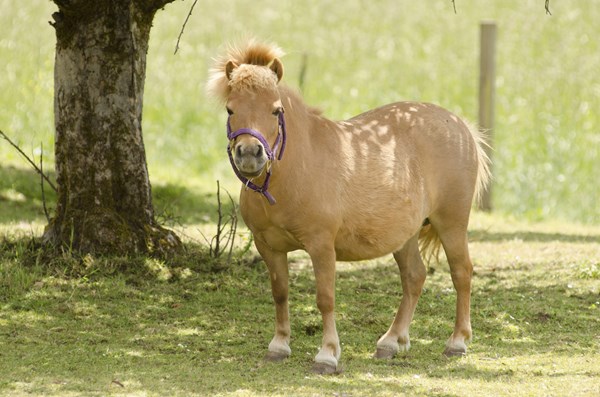
Owners of obese horses know that these animals will be healthier and more comfortable if they shed excess body weight. Various management suggestions—cutting out grain meals, restricting free access to pasture, increasing exercise, providing medium-grade hay—are purported to encourage weight loss in horses, but these measures can be difficult to enforce and may take a long time to produce significant results. Especially if they have struggled with their own tendency to gain weight easily, some owners may wonder if simply locking the horse in a bare drylot for a few weeks wouldn’t be an easier and faster way to slim down their chubby chargers.
Equine crash diets are a dangerous idea, according to nutritionist Kathleen Crandell, PhD, of Kentucky Equine Research. Severely restricting horses from eating is not only cruel, but can also lead to conditions that might be fatal once refeeding begins.
Serious metabolic changes occur in horses that are not allowed to eat. The first effect is a reduction in energy expenditure as stored energy is directed toward essential functions. Glycogen stored in the liver is depleted within the first day or two, after which protein and stored fat are mobilized as the liver synthesizes more glucose to fuel the brain and nervous system. Muscle protein is broken down to provide amino acids that can be converted into glucose, and fatty acids can be used for energy in most tissues.
Hormonal changes in response to fasting begin with a sharp decrease in insulin production. This adaptation promotes the use of fatty acids and the breakdown of muscle protein to supply energy. Production of triiodothyronine, a thyroid hormone, also decreases, lowering the overall metabolic rate.
Horses deprived of all food develop increases in the plasma concentrations of glycerol, nonesterified fatty acids, and triglycerides. The elevated level of triglycerides (hyperlipemia) can be followed by an infiltration of fat into the liver and kidneys if the liver’s capacity for lipoprotein synthesis is overwhelmed. This condition is most common in ponies and miniature horses, but can also occur in full-sized horses.
Any equine that is insulin-resistant is at increased risk for fatty liver disease if feed is withheld. Affected horses and ponies must be carefully managed, and even with aggressive nutritional support, the prognosis for recovery is poor. Thus, crash dieting for horses is an extremely dangerous approach to weight loss.
Crandell suggests that a slower but much safer way to help obese horses lose those unwanted pounds it to follow the suggestions mentioned above, monitoring progress by using a scale or weight tape on a regular basis and adjusting the diet to achieve slow, steady loss of weight. She also reminds horse owners that any change to a horse’s diet should be made gradually over a period of 7 to 10 days.
Visit equinews.com/newsletters to subscribe to The Weekly Feed, KER’s award-winning equine nutrition newsletter.


